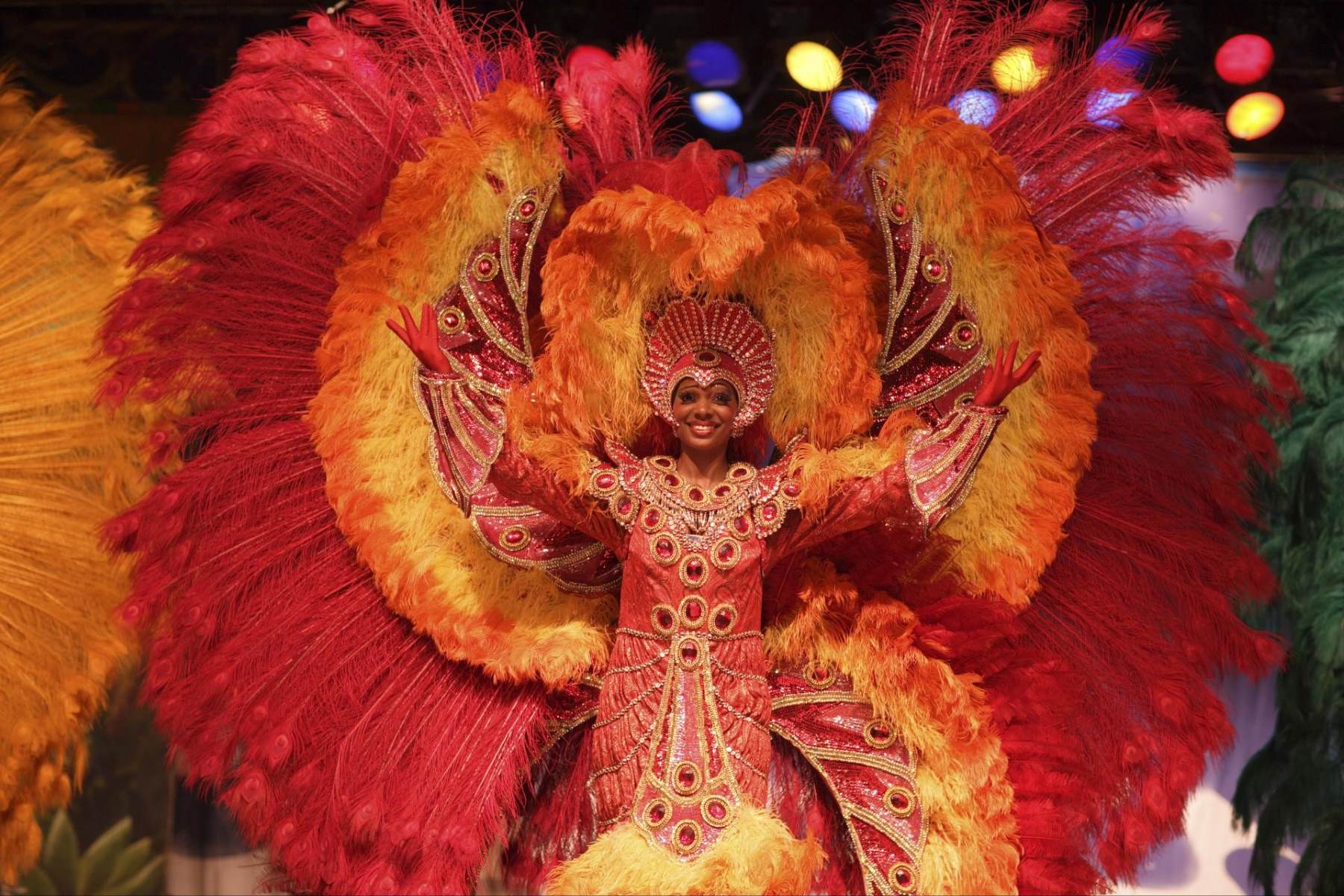10 Traditional Brazilian Dances That Will Surprise You

Brazil is a country bursting with vibrant culture, and nothing showcases this better than its traditional dances. From the energetic rhythms of Samba to the graceful movements of Forró, these dances tell stories of history, passion, and community. Traditional Brazilian dances are not just performances; they are experiences that bring people together. Whether you're planning a trip to Brazil or just curious about its rich cultural heritage, learning about these dances will give you a deeper appreciation for the country's spirit. Ready to be amazed by the rhythm and energy of Brazil? Let's dive into the world of Brazilian dance!
Samba: The Heartbeat of Brazil
Samba is synonymous with Brazilian culture. Originating from African rhythms, this dance is vibrant, energetic, and full of life. Let's explore some of the most captivating forms of Samba.
Samba de Roda: This traditional dance from Bahia involves singing, clapping, and playing percussion instruments. Dancers move in a circle, showcasing their agility and rhythm.
Samba no Pé: Often seen during Carnival, this solo dance requires quick footwork and hip movements. It's a true test of a dancer's stamina and skill.
Samba Axé: A more modern version, Samba Axé combines traditional Samba steps with contemporary dance moves. It's popular in dance clubs and fitness classes.
Forró: The Dance of the Northeast
Forró is a beloved dance from Brazil's northeastern region. It's a partner dance characterized by close embraces and intricate footwork. Here are some variations of Forró.
Forró Pé de Serra: The traditional form, danced to the sounds of accordion, triangle, and zabumba. It's intimate and often performed at festivals.
Forró Universitário: A modern take on Forró, popular among university students. It incorporates elements of other dance styles, making it more versatile.
Frevo: The Dance of Joy
Frevo is a high-energy dance from Pernambuco, known for its acrobatic moves and colorful umbrellas. It's a staple of the Recife Carnival. Let's look at its unique forms.
Frevo de Rua: Performed in the streets, this dance is fast-paced and involves jumps, kicks, and splits. Dancers often use small umbrellas as props.
Frevo de Bloco: A more melodic version, accompanied by brass bands. The dance steps are less intense but still lively and joyful.
Carimbó: The Dance of the Amazon
Carimbó hails from the Amazon region and reflects the indigenous and African influences in Brazilian culture. It's a sensual dance with a strong connection to nature.
Traditional Carimbó: Dancers wear colorful skirts and move gracefully to the beat of drums and flutes. The dance often tells stories of love and nature.
Modern Carimbó: Incorporates contemporary music and dance elements, making it popular among younger generations.
Capoeira: The Dance of Combat
Capoeira is a unique blend of dance and martial arts, originating from African slaves in Brazil. It's both a physical and cultural expression.
Capoeira Angola: The traditional form, characterized by slow, deliberate movements and close-to-the-ground techniques. It's a game of strategy and skill.
Capoeira Regional: A faster, more acrobatic version developed in the 20th century. It emphasizes speed, strength, and agility.
Maracatu: The Dance of Royalty
Maracatu is a traditional dance from Pernambuco, rooted in African traditions. It's performed during Carnival and other celebrations, showcasing the rich cultural heritage of Brazil.
Maracatu Nação: The traditional form, featuring elaborate costumes and a royal court. Dancers move to the rhythm of drums and other percussion instruments.
Maracatu Rural: A more rustic version, performed in rural areas. It involves simpler costumes and a focus on community participation.
Bumba Meu Boi: The Dance of Folklore
Bumba Meu Boi is a folk dance from the northern region of Brazil, telling the story of a resurrected ox. It's a colorful and theatrical performance.
Traditional Bumba Meu Boi: Involves elaborate costumes, masks, and props. The dance is accompanied by music and storytelling.
Modern Bumba Meu Boi: Incorporates contemporary elements, making it more accessible to a wider audience.
Xaxado: The Dance of the Cangaceiros
Xaxado is a dance from the northeastern region, associated with the cangaceiros (bandits) of the early 20th century. It's a lively and rhythmic dance.
Traditional Xaxado: Performed in groups, with dancers wearing traditional cangaceiro attire. The dance steps mimic the movements of the bandits.
Modern Xaxado: Incorporates modern music and dance elements, making it popular in dance schools and festivals.
Lundu: The Dance of the African Heritage
Lundu is a dance with African roots, brought to Brazil by enslaved Africans. It's a sensual and rhythmic dance, reflecting the rich cultural heritage of Brazil.
Traditional Lundu: Involves slow, deliberate movements and close partner dancing. The music is typically played on drums and other percussion instruments.
Modern Lundu: Incorporates contemporary music and dance elements, making it more accessible to a wider audience.
Maxixe: The Dance of the Early 20th Century
Maxixe is a dance from the early 20th century, often referred to as the Brazilian tango. It's a lively and rhythmic dance, reflecting the cultural melting pot of Brazil.
Traditional Maxixe: Involves intricate footwork and close partner dancing. The music is typically played on guitars and other string instruments.
Modern Maxixe: Incorporates contemporary music and dance elements, making it popular in dance schools and festivals.
The Heartbeat of Brazil
Brazilian dances are more than just steps and rhythms. They tell stories, celebrate heritage, and bring people together. From the energetic Samba to the graceful Forró, each dance offers a unique glimpse into Brazil's rich culture. Capoeira blends martial arts with dance, while Frevo dazzles with its acrobatics. Maracatu and Carimbó showcase regional traditions, and Lambada brings a tropical flair. Bumba Meu Boi and Jongo connect deeply with African roots, and Xaxado reflects historical struggles. Experiencing these dances, whether watching or participating, immerses you in the vibrant spirit of Brazil. Next time you hear a Brazilian beat, remember the stories and traditions behind the moves. Dive into the rhythm, feel the passion, and let the dances of Brazil surprise and inspire you.

